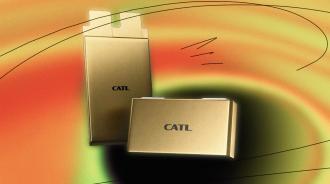Chinese battery-manufacturing behemoth CATL has announced their most powerful battery to date — one which they believe will be capable of powering electric aircraft by meeting both energy needs and safety standards.
CATL claims that their new battery has an energy density — the amount of power it has compared to its mass — of 500 watt-hours per kilogram. Essentially, it can crank out more power from a lighter weight than current offerings, a key concern not only for electric car range but even more so for the aviation industry. The company calls their new offering a “condensed battery” and are being cagey with details, both technical and commercial.
“The launch of condensed batteries will usher in an era of universal electrification of sea, land and air transportation, open up more possibilities of the development of the industry, and promote the achieving of the global carbon neutrality goals at an earlier date,” said CATL chief scientist Wu Kai at an Auto Shanghai presentation, reported Aussie EV outlet The Driven.
“The launch of condensed batteries will usher in an era of universal electrification of sea, land and air transportation.”
Wu Kai
Upping the power: The condensed battery has twice the energy density as what’s currently in Tesla’s midsize SUV, the Model Y, and it eclipses the energy density of the previous title holder by more than 10%. Ampirus once held the crown, with an offering clocking in at 450 Wh/kg; the cell powering Tesla’s Model Y measures around 244 Wh/kg, New Atlas reported.
The battery uses “a micron-level net structure” that can increase the efficiency and stability of the battery. CATL also says that their condensed battery uses “a range of innovative technologies,” although did not specify what exactly those materials are, Bloomberg reported.
Known unknowns: CATL plans on producing an automobile-focused version of their high energy density battery by the end of the year, and one geared towards aviation will also be forthcoming.
Other than the headline energy density figure, the announcement still leaves quite a bit of detail in the dark (so to speak). As New Atlas pointed out, figures for energy density by volume — another performance metric — are still unknown, and space is an important constraint in both planes and cars, as well as weight.
And while the company has said it is working with a partner to develop civilian electric aircraft tech, said partner remains undisclosed, Bloomberg reported.
We’d love to hear from you! If you have a comment about this article or if you have a tip for a future Freethink story, please email us at [email protected].






